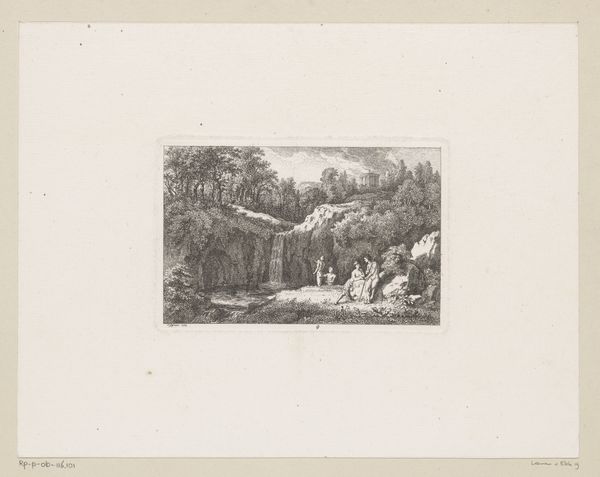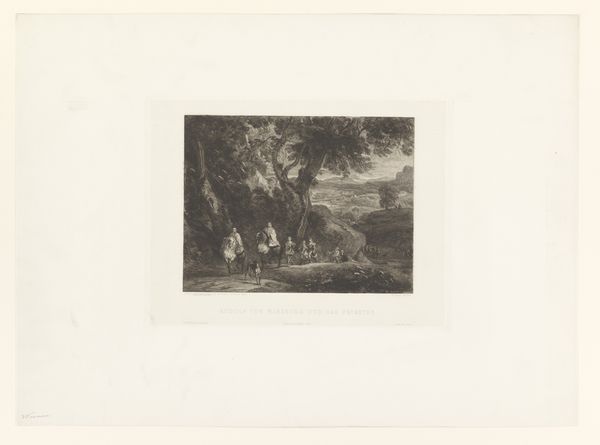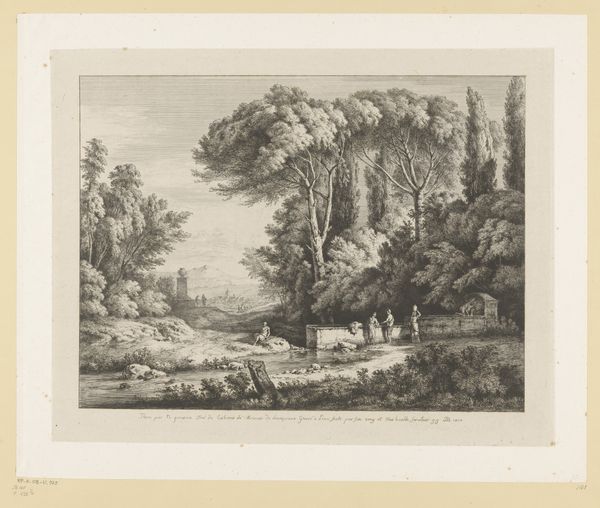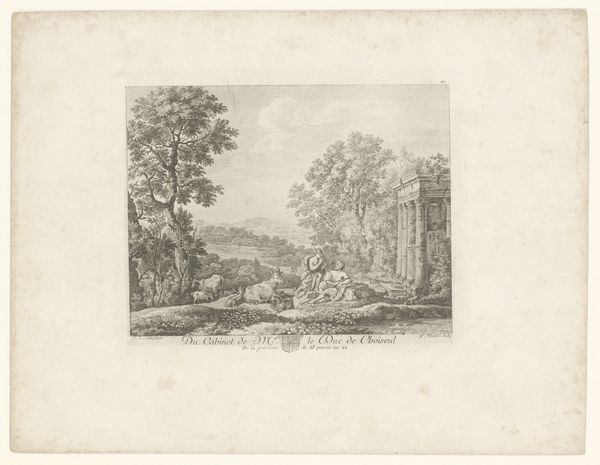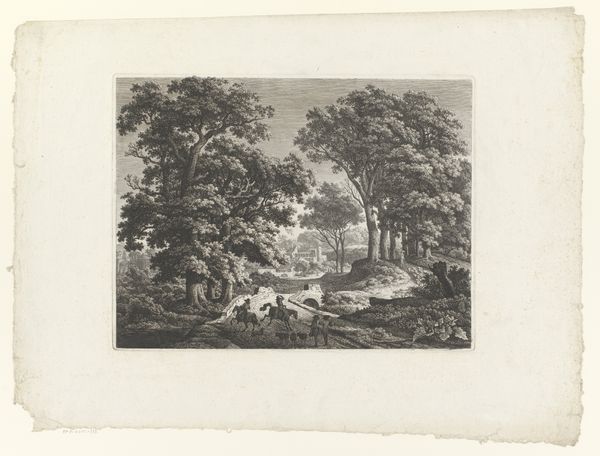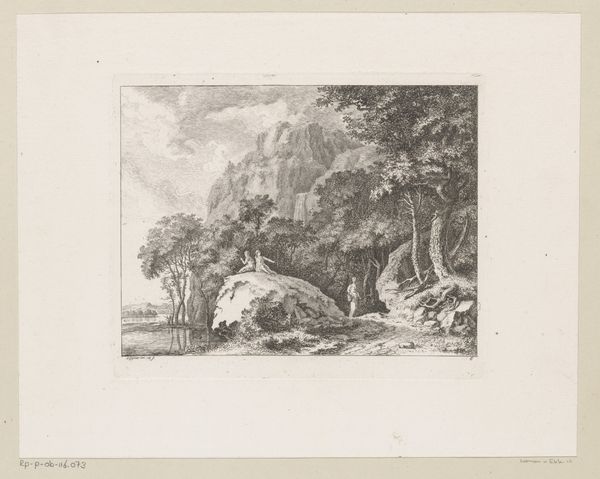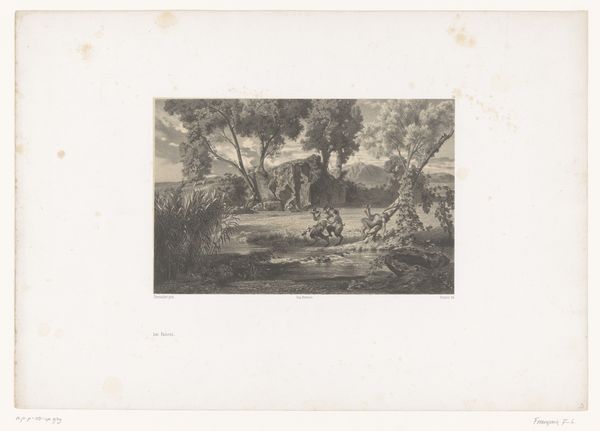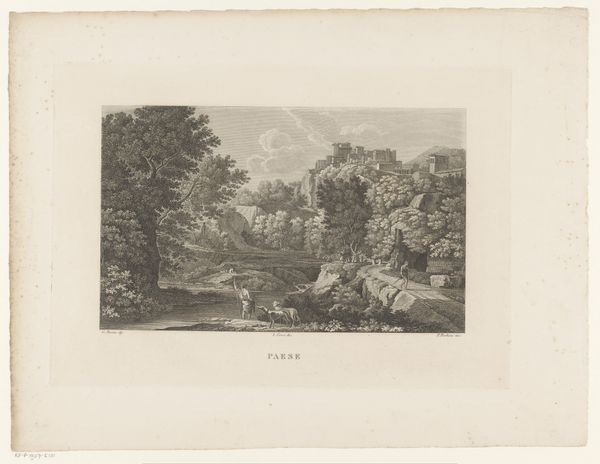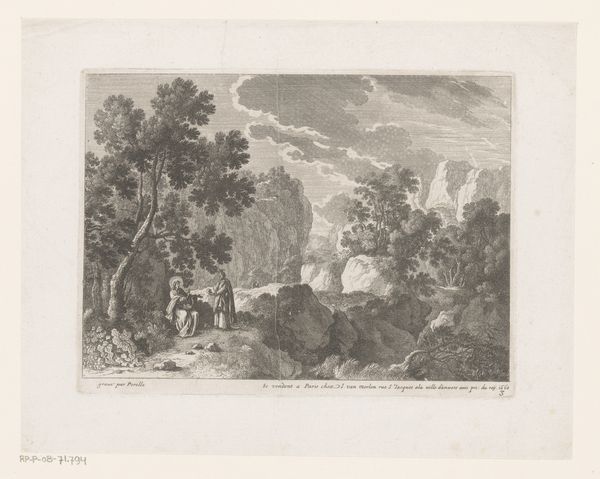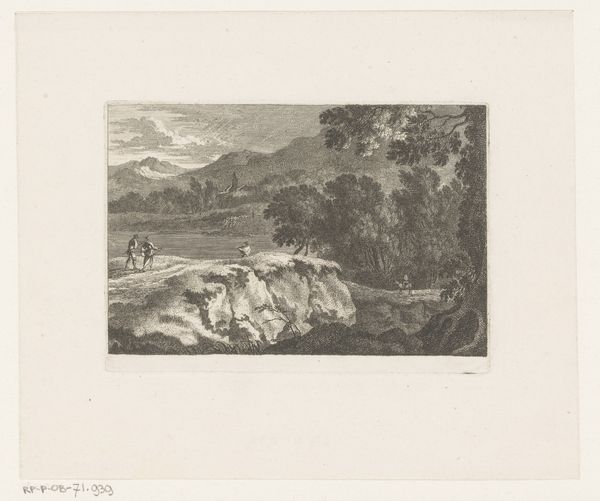
Dimensions: height 86 mm, width 124 mm
Copyright: Rijks Museum: Open Domain
Editor: This is "Bergachtig landschap met links een wandelaar naast een hek," a landscape etching by Joseph Hubert Blees from 1861. The scene has such a peaceful and almost melancholic feel to it. What catches your eye in this particular landscape? Curator: What I see is an interesting interplay between romantic ideals and burgeoning realism. Blees gives us this lone figure contemplating a vast landscape. Consider the period; it’s right before monumental shifts in societal structures driven by industrialization. The ‘wandering’ figure is a symbolic representation of humanity standing at a crossroads: one path leading back to nature and its simplicity, the other advancing towards progress, or perhaps destruction. Editor: Destruction? I didn't get that feeling from it. Curator: Look at the dark, looming crag compared to the small domestic structures below. The composition might suggest an underlying anxiety. Think about landscape painting within the context of colonial expansion; nature, even when beautiful, can be perceived as something to be conquered, a resource to be exploited. The figure seems separated by the fence, creating an exclusionary composition, further implying loss and transition. Do you see this as an invitation or an impediment to progress? Editor: That's a compelling point. I hadn’t considered it in that context. It makes me wonder if Blees was consciously critiquing the very idea of progress at that time. Curator: Precisely! Artists are never truly detached observers. They participate in a larger dialogue about societal norms and ideals. By juxtaposing these elements within a seemingly idyllic scene, Blees prompts a deeper interrogation into humanity’s relationship with nature. Editor: I’ll definitely look at landscape art differently from now on! It’s amazing how much historical context shapes our understanding. Curator: Absolutely, that intersectional perspective reveals complexities unseen by a singular gaze.
Comments
No comments
Be the first to comment and join the conversation on the ultimate creative platform.
